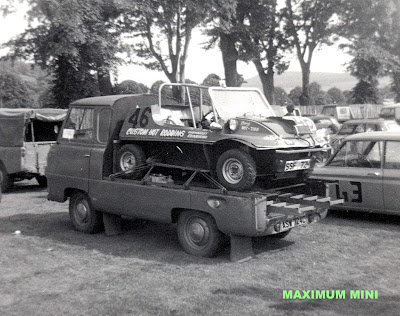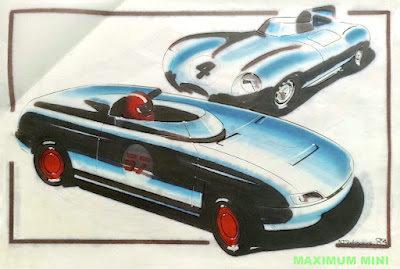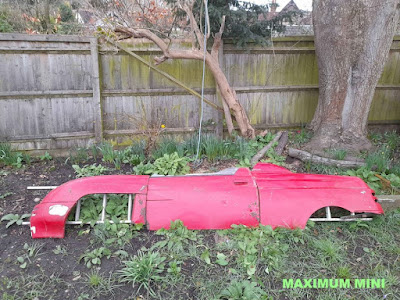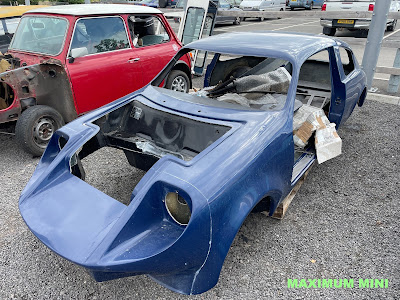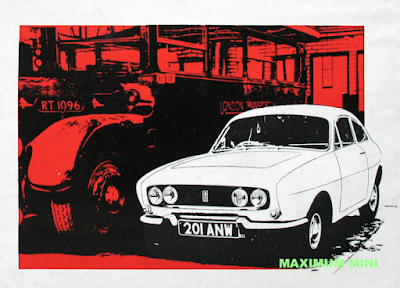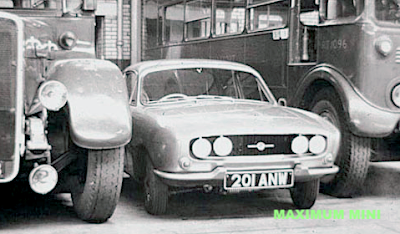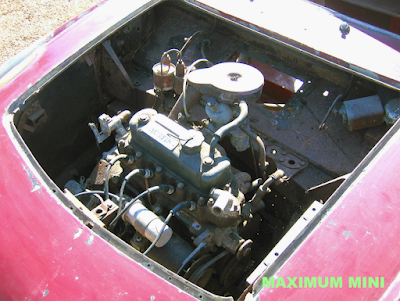This picture, shared on Facebook recently, was just too good not to show here also. That's the Stimson Mini Bug racer of Vince Gonelli on the back of a Ford Thames van that was converted in a pick-up. Gonelli ran Custom Hot Rodding in Edinburgh, Scotland, and was the Scottish agent for the Stimson cars. He was undoubtedly on his way to or from an autocrossing event here. Love it! More pictures and info about Gonelli's Stimson agency here . Could his old racer 'SSF 872H' survive?
Pages
Tuesday, 28 June 2022
Works transporter Scottish style
Monday, 27 June 2022
The Mini Metro based Roadster that doesn't exist
Friday, 24 June 2022
Marcos and GTM Rossa shells for sale
A Mini Marcos Mk5 and GTM Rossa Mk2 body shell are offered for sale by HJ Pugh auctioneers this weekend in Ledbury. The Marcos (click here) is registered on a 1971 plate and wears chassis number 7514S, but could it even be a Mk6? The GTM (click here) comes with roll bar and glass. Despite the Marcos' registration it seems to me that both have never been on the road. They both certainly are nice project cars. Apart from these two, a great number of Mini spares is offered for sale, too. Have a good weekend.
James Bond's Mini Moke based Moonraker buggy
Monday, 20 June 2022
Is American mystery racer an SWM prototype?
Thursday, 16 June 2022
Ogle SX1000 number 8 - where are you now?
Wednesday, 15 June 2022
The Badsey Eagle: what happened to it?
Monday, 13 June 2022
Status Minipower spotted - in 1984
Friday, 10 June 2022
Brooks Mini Special was to become the new Lightburn Zeta
Thursday, 2 June 2022
Mystery Mini derivative (81) - Mini Spiaggina
A Mk1 Mini that was converted into some kind of Beach car and called 'Mini Spiaggina' ('Mini Beach') was seen for sale in Rome recently. It makes me wonder what exactly it could be. Said to be a February 1967 car it may well be an early conversion, but by whom? It's certainly not an Innocenti Mini Mare, but also not one of the other beach car-esque conversions from southern Europe that I know of: the Arco Iris Mini from Spain, the Kosellek Mini from France or the Jacky Mini Plage, also from France.
The Mini wore an 'LE' plate which came from the province of Lecce or 'The heel of Italy' on the Salento peninsula in the very south-east. That seems a suitable place to drive a Beach Car. It sold swiftly for not very much, too. Somebody who can tell if the base vehicle was an Innocenti? And who knows more about this nice little conversion anyway..?

